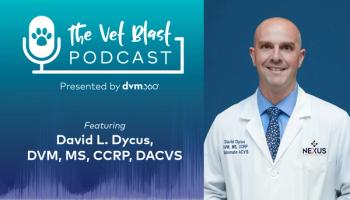
Texas A&M claims first cat clone
"Cc," a calico and white shorthair, is the first cat to join a list of clones, which includes cows, sheep, pigs, goats, and mice, report officials of Texas A&M University.
"Cc," a calico and white shorthair, is the first cat to join a list of clones, which includes cows, sheep, pigs, goats, and mice, report officials of Texas A&M University.
The kitten, born in late December at the university, is the first success story of a program at Texas A&M designed to allow pets to be cloned. The cat is said to be the first successfully cloned companion animal ever.
The cloning's announcement, which came on Feb. 13, was delayed until DNA analysis could confirm genetic identity.
The ultimate goal was "to produce a clone and to develop a capability to produce cloned cats for biomedical research, conservation and for pet reproduction," explains Dr. Duane Kraemer, professor of veterinary physiology, pharmacology and animal science, Texas A&M University.
News of the cloning was reported in the Feb. 21 issue of Nature.
The clone was produced using nuclear transfer, performed by Dr. Taeyoung Shin. Drs. Kraemer, Jim Rugila, and Lisa Howe assisted with transfer of the cloned embryos into the surrogate mother and the kitten's delivery.
Opposition voiced
Strong disapproval of the cloning project was expressed by the Humane Society of the United States, indicating that such endeavors further the problem of pet overpopulation.
"We recognize that a person may have an extraordinary bond with an animal, and we encourage the development of these bonds," says HSUS Senior Vice President Wayne Pacelle. "But there is no way to create a pet identical to the one that is gone. They are distinctive and cloning cannot eliminate their uniqueness."
Kraemer of Texas A&M agrees with HSUS to a point.
"We have a common concern about the pet populations, but we have a fundamental difference in our attitude about animal research," he says. "Animal research is one of the primary reasons we clone - for the benefit of animals as well as humans. We think research and increased knowledge is the answer to developing pet contraceptives and animal control."
Read the full article by Senior Associate Editor Stephanie Davis in the March issue of DVM Newsmagazine.
Newsletter
From exam room tips to practice management insights, get trusted veterinary news delivered straight to your inbox—subscribe to dvm360.



